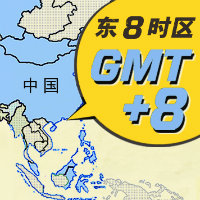
“Do you know the time?”
“你知道时间吗?”
Time is a very complex thing. We’re surrounded by it, yet all too often we feel like we don’t have enough of it.
时间是个非常复杂的东西,它无处不在,又常常让我们感觉不够用。
Sometimes, we take it for granted. At other times, we wish we had more.
有时候,我们没把时间当回事儿,但另外一些时候,我们又希望时间能再多一点儿。
When we’re busy or having fun, time seems to pass quickly. When we’re bored, or moving slowly — for example, driving at constant speed across a monotonous landscape — it seems to pass at glacial speed.
繁忙或开心的时候,时间总是过得很快。无聊或移动缓慢的时候,比如开车匀速驶过一片单调乏味的景致时,时间似乎又像冰川挪动速度一样慢。
The average tempo of daily life and work has been dramatically sped up by advances in IT, communications, transportation, and productivity. Apart from objective changes in the pace of life, our perspectives change as we grow older.
IT、通讯、交通和生产力的发展大大提高了日常生活和工作的一般节奏。除了生活节拍的客观变化以外,我们的视角也随着年龄的增长而发生了改变。
Young people never say: “Wow. This year went by so quickly.” Older people say this kind of thing frequently.
年轻人从来不会说:“哇,今年过得好快!”只有上了岁数的人才常把这种话挂在嘴边。
Our individual perceptions about the passage of time are influenced by a variety of internal and external factors. As a result, our feelings about the passage of time vary considerably, despite the fact that time’s passage on a clock is a very consistent, measurable phenomenon.
我们对时间流逝的认知受到很多内部和外部因素的影响,因此,时间的推移尽管在钟表上是一件非常统一而且可以衡量的事情,但它带给我们的感受却大相径庭。
Various types of instruments to accurately measure the passage of time were invented in ancient China, Greece, and other civilizations thousands of years ago.
早在数千年前,古代中国、希腊和其它很多古代文明就发明了各种各样的精确计时仪器。
There is no ongoing scientific debate about the fact that one day in solar time is comprised of 24 hours, or that one year is 365 days in length. On the other hand, for most of us, our individual perceptions about time are a curious mix of science-based knowledge and subjective experience.
现在,对于太阳时的一天包括24个小时、一年有365天这样的事实已经不再存在科学上的争论。但另一方面,对大多数人来说,个人对时间的感知却是科学知识和主观经验的奇妙结合。
The last time I said that the past year had gone by too quickly, for example, I did not conclude that the calendar, or the clocks, must be inaccurate as a result.
例如,我上次说去年过得真快的时候,并没有将它归结为日历或钟表的不准确。
It is a huge blessing that among the things that people around the world still disagree about (which are many), the accuracy of standard clocks and calendars is not one of them. Otherwise, we’d be in even bigger trouble than we are now.
非常幸运的是,在全世界人们仍在争论不休的(很多)事情中,并不包括关于标准时钟和日历准确性的讨论。否则我们的麻烦会比现在更大。
For one thing, the list of common excuses for missed deadlines would be exponentially expanded. This would be a headache for leaders in government, managers in business, sports coaches, editors, teachers and so on.
如果那样的话,经常用来解释错过最后期限的借口将会呈几何级增长,让政府领导、企业经理、运动教练、编辑和教师叫苦不迭。
Example:
例如:
“Mr. Minister, the new bridge project will be completed right on time according to our calendar. Unfortunately it will be 10 months behind schedule on that calendar your people have been using. These damn regional calendars! So many choices available in the market….”
“部长先生,新桥会按我们的日历准时完工。但遗憾的是,如果按您部下使用的日历,就是延期10个月完工。这些该死的地方日历!市场上的产品也太多了……”
Although humankind has been able to accurately measure the passage of solar time for many centuries, international agreement on a framework to coordinate and standardize time zones around the globe is a relatively recent development, dating from the late 19th century.
尽管人类从很多世纪前就能准确地度量日历时的推移,但全世界为协调和规范时区的框架而达成国际一致还是最近的事,大约就在19世纪晚期。

The International Meridien Conference of 1884 established Greenwich Mean Time, referring to the mean solar time at the Royal Observatory in Greenwich, near London. Greenwich thus became established as the location of the prime meridian of longitude, and the base line for calculating time zones around the world.
1884年,国际子午线大会确立了格林威治标准时间(GMT),即伦敦附近的格林威治皇家气象台(the Royal Observatory in Greenwich)的平均太阳时间。由此格林威治不仅作为起初子午线的所在地,也成为全球计算时区的基准线。
This was quite a victory for England, which ultimately derived from the remarkable ingenuity of a 18th century British watchmaker with no formal education, John Harrison, who solved the centuries-long scientific mystery of how to establish accurate time-keeping on seafaring vessels, thus enabling accurate calculation of longitude.
这是英国的巨大胜利,而它的最终缔造者是一位没有受过任何正规教育的18世纪英国钟表匠——约翰•哈里逊。他解决了困扰人类几个世纪之久的海上计时难题,使经度的准确计算成为了可能。
Without a reliable measure of longitude, seafaring explorers, naval and merchant vessel captains had for centuries never been sure of their exact location while on the high seas. Thousands of lives and many vessels were lost as a result, until Harrison’s breakthrough invention of the marine chronometer.
没有可靠的经度测量,航海探险家、海军和商船船长在几个世纪内都无法确定自己在远海的准确位置,无数生命和船只因此魂断汪洋,直到哈里逊突破性地发明了航海天文钟。
After the 1884 Convention, Greenwich officially became the place where every day, year and century began. The main international system of nomenclature for time zones around the world was thus referenced to Greenwich Mean Time (GMT). A more recent invention is Universal Coordinated Time (UTC), which for all practical purposes refers to the same time zones by a different name.
1884年大会以后,格林威治正式成为每一天、每一年及每一世纪开始的地方。国际上主要时区系统的命名也都与格林威治时间有关。最新发明的协调世界时(UTC)从实用出发,将相同的时区进行了重新命名。
The basic framework of international time zones is that there is about one hour difference in solar time for every 15 degrees of longitude. In the case of the continental U.S., for example, the approximate distance between the West and East coasts is 2,600 miles, equivalent to roughly 60 degrees of longitude. Thus, the continental U.S. (not counting Alaska and Hawaii) has four time zones.
国际时区的基本框架是经度每隔15度,太阳时就相差一小时。例如在美国大陆,东西海岸之间的距离约为2,600英里,相当于横跨60度经度,因此美国大陆(不含阿拉斯加和夏威夷)共分为四个时区。
The four continental US time zones, like most time zones around the world, are known by one set of names for domestic purposes, and in reference to GMT for international purposes. For example, New Yorkers know their time zone as Eastern Standard Time (EST), and only a regular international traveler would recognize it as GMT-5. Likewise, the U.S. West coast time zone is known to most Americans as Pacific Standard Time (PST) zone rather than GMT-8.
和世界许多时区一样,美国的四个时区在国内使用一套名称,但在国际上则参照格林威治标准时间。例如,纽约人都知道他们地处东部标准时区(EST),但只有经常跨国旅行的人才知道纽约位于格林威治标准时间西五区。同样,大多数美国人都知道美国西海岸位于太平洋标准时区(PST),却不知道它也叫做格林威治标准时间西八区。
For national and regional governments, solar time is just one consideration, and not always the most important one. As a result, a review of global time zones reveals examples where governments have chose variations on solar time to define their domestic time zones.
对国家和地区政府而言,太阳时只是备选方案之一,但并不见得总是最重要的。结果,检视一下全球的时区,就会发现,很多政府选择用不同的太阳时来规定国内时区。
China and India are cases in point, where there is one time zone from East to West. In China, the decision in 1949 to establish a single national time zone on Beijing time replaced the previous system of five time zones which had been established in 1912.
中国和印度就是如此,两国从东到西都只有一个时区。1949年,中国设定北京时间为全国统一时区,取代了1912年划定的5个不同时区。
Greater China falls within the GMT+8 time zone, which is the most populous and geographically expansive time zone on the planet, comprising states, regions and countries from Western Australia in the Southern Hemisphere to North Korea, Mongolia and parts of Russia in the Northern Hemisphere, including large parts of Southeast Asia as well.
大中华区位于格林威治标准时间东8时区内,东8时区是这个星球上人口最稠密、地域最广袤的时区,包括南半球的西澳大利亚及北半球的朝鲜、蒙古和俄罗斯部分地区在内,还有东南亚大部。
I have been a resident of the GMT+8 time zone for nearly 40 years. Apart from being a huge and populous time zone, it has been the earth’s fastest developing region for 30 years, and is very much the focus of global interest and attention.
我在东8时区居住了将近四十年。除了幅员辽阔、人口众多之外,东8时区还是过去30年间增长最快的地区,也是全球关注的焦点。
A hot topic in China these few years has been going global, and what individuals and organizations need to do to be successful at it. The answer has many facets to it, but undoubtedly begins with revisiting how we think about things. We’ll get nowhere by always thinking from a “local” perspective.
近年来,“走出去”以及个人和组织为成功实现这一目标应采取哪些行动——在中国成为热议的话题。答案涉及很多层面,但无疑都会从反思自己的思维模式开始。如果总是从“本地”视角出发,肯定哪儿也去不了。
An unfortunate paradox of globalization is that mutual understanding has not kept pace with global shrinkage. International communications and transportation networks are light years ahead of what they were 30 years ago, and yet we still routinely, and sometimes profoundly, misunderstand each other.
不幸的是,全球化的矛盾之一就是世界虽然正在缩小,但相互之间的理解却没有相应地跟上。当今国际通讯及交通的发展已经抛开30年前若干光年的距离,但我们仍会经常性地、有时甚至是深深的误会彼此。











